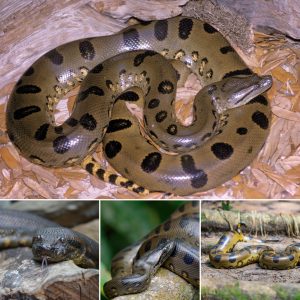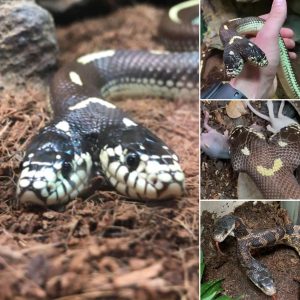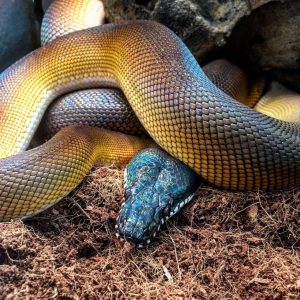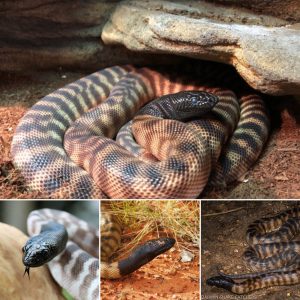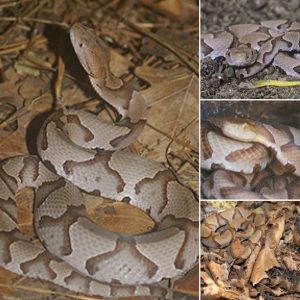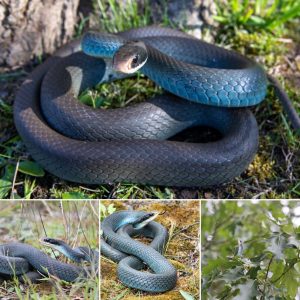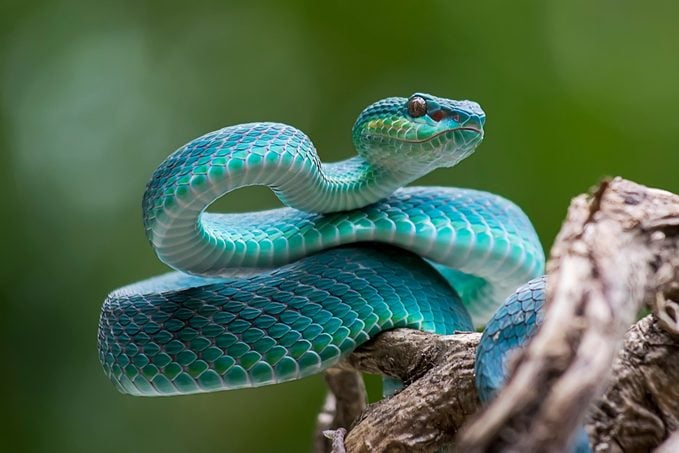
Snakes are cool animals that play vitally important roles in our everyday lives, even though few of us may ever notice them.
Found on every continent except Antarctica, snakes are a large and diverse group of reptiles that have elongated, limbless bodies covered in overlapping scales (in fact, they’re not slimy at all!). Snakes are even found in the water.
These carnivorous reptiles are excellent hunters that control pest populations by eating insects and rodents. Without them, our farm fields would be overrun! Smaller snakes, including the garter snake that’s common throughout Indiana, also become prey for other animals. This food web ensures that everyone eats and no single population grows too large.
While snakes sometimes get a bad rap, they serve a critical role in the natural world, and some need our help!
At the Indianapolis Zoo, guests can see both venomous and nonvenomous snake species of all sizes at the Deserts Dome exhibit, Size, Speed & Venom: Extreme Snakes. During our seasonal snake chats, guests can even touch some of these amazing animals, such as our Burmese pythons.
Size, Speed & Venom also features Indiana’s venomous snake species: timber rattlesnake, copperhead, cottonmouth, and Eastern Massasauga rattlesnake, which are all native vipers. The cottonmouth, Eastern Massasauga and timber rattlesnakes are classified as state endangered species. The Eastern Massasauga rattlesnake is also a federally threatened species, and to support the conservation of these at-risk animals, the Zoo participates with other accredited facilities in the Association of Zoos and Aquariums’ Species Survival Program. Members of our Deserts team have also assisted with gathering census information to monitor the population of Eastern Massasaugas in the wild.
Additionally, a partnership between the Indianapolis Zoo and the Species Survival Commission (SSC) of the International Union for Conservation of Nature (IUCN) created the Global Center for Species Survival that supports, connects and communicates the work of thousands of conservation experts working to secure a future for animals, fungi and plants across the globe. These conservationists help save species, and many are members of Specialist Groups.
We asked the snake Specialist Groups what they wanted people to know about these amazing animals.
BOA AND PYTHON SPECIALIST GROUP
Pythons and boas are remarkably diverse in their size, color, pattern and living arrangements — from trees to land to water and even underground!
These snakes are ambush predators, meaning that they sit and wait for their prey before striking and constricting it. This can make them difficult to find, so interactions with humans are relatively infrequent.
Boas and pythons face numerous threats, including loss of habitat, pet trade, disease, climate change and human wildlife conflict. If you want to help boas and pythons, it’s important to do your research before adopting these snakes as pets to ensure the animal is coming from a reputable place and you can provide a good home throughout its lifetime.
VIPER SPECIALIST GROUP
Vipers are fascinating snakes. Not only are they venomous, but they are also masters of camouflage and highly adaptable. Their beautiful patterns allow them to disappear in plain sight, which is useful in the many places they call home. They can be found in jungles, like the eyelash viper.
Vipers are good parents — many take care of their young in some way. Vipers are also beneficial to human beings, because they eat a lot of animals, such as rodents and insects. Though rare, a bite from a viper can be dangerous, yet their venom has many medical uses. The venom from copperheads is being used to treat breast cancer!
SEA SNAKE SPECIALIST GROUP
Most people are familiar with snakes on land, but they are also found in freshwater lakes, estuaries and in the sea.
While the Zoo doesn’t have any sea snakes, they represent the most diverse group of marine reptiles and closely related to venomous Australian elapid snakes, with more than 60 species found throughout tropical oceans.
People don’t encounter these unique marine reptiles often, however they play an important role in keeping tropical reefs and coastal marine systems healthy. These animals have adapted to living in the ocean, can hold their breath for more than two hours, breathe through their skin and have been found diving to 820 feet to forage for food.
AVOIDING CONFLICT
Snakes prefer to avoid people. It is safer for them and humans if we give them space. If you come across a snake in the wild, keep your distance and leave it alone. Snakes only bite when they feel threatened. It is also helpful to know what kinds of snakes you might encounter near your home or while exploring nature. By staying clear of possible hiding spaces, you can avoid conflict.
This blog was a collaboration between experts with the Global Center for Species Survival, the Boa & Python Specialist Group, the Sea Snake Specialist Group, the Viper Specialist Group, and the Red List Authority for Snakes.
